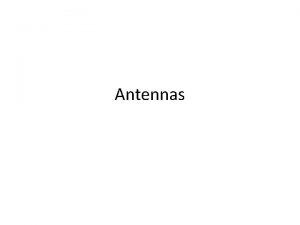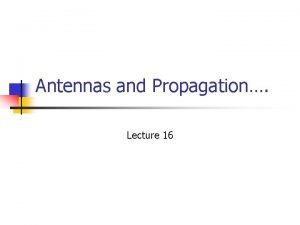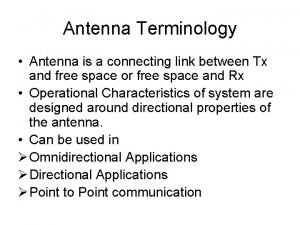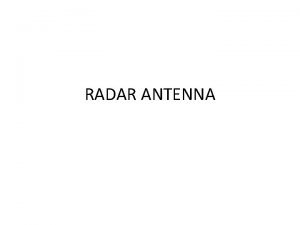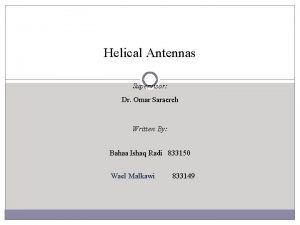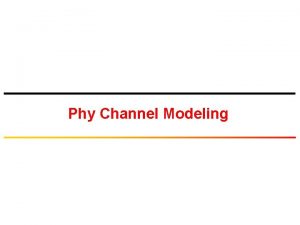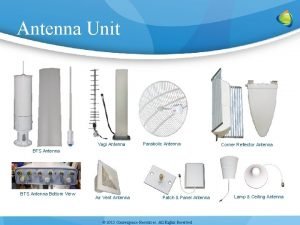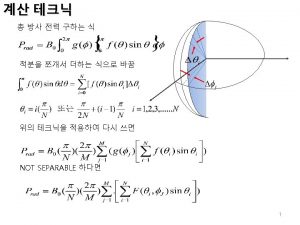Gain and Power Gain An isotropic antenna simply






- Slides: 6

Gain and Power Gain • An isotropic antenna simply beams its energy evenly in all directions • The gain is the ratio of the maximum power received from a parabolic reflector to that from an isotropic antenna emitting the same total amount of energy • The antenna or power Gain (in d. B) is defined as: 10 log 10 (gain) 1

Antenna (Power) Gain of NRP Radars • Typical weather antenna gains range from 20 to about 45 d. B (Rinehart 1997) • The antenna gain of operational weather radars is quite high…. . . • CWSR 98 -A : 46 d. B • CWSR 98 -E : 43 d. B • WSR 88 D: 45 d. B 2

Antenna-beam width relationship • Beam width (deg) = 70 l / (Antenna diameter) • The diameter of the reflector of the new systems is 6. 1 m, compared to 3. 7 m for the retrofit systems • Thus, the angular beam width (to half power) of the new systems is narrower than in the retrofit cases (0. 65 deg vs 1. 1 deg) • This improves resolution and useful range • A small beam width minimizes the effects of partial beam filling and beam blockage, the main reasons for poor performance with range 3

Gain and Beam width • For circular reflectors, the expression relating gain and beam width is: g=p 2/ q 2 where q is the beam width in radians (Rhinehart 1997 quoting Battan, 1973) 4

Antenna Gain vs Beam width 5

Gain vs Beam width • Thus, the smaller the beam width, the better the gain • Improved gain means higher signal strength for distant objects or small targets – e. g. light precipitation may be detected at greater distances 6
